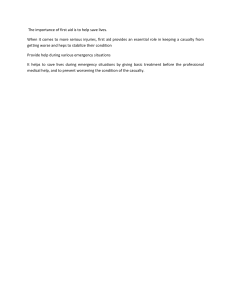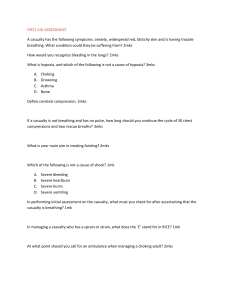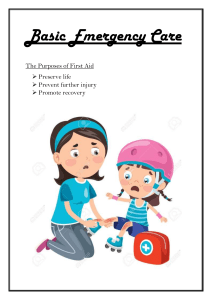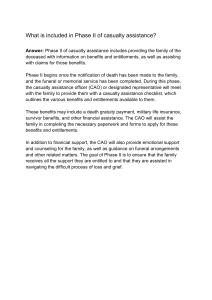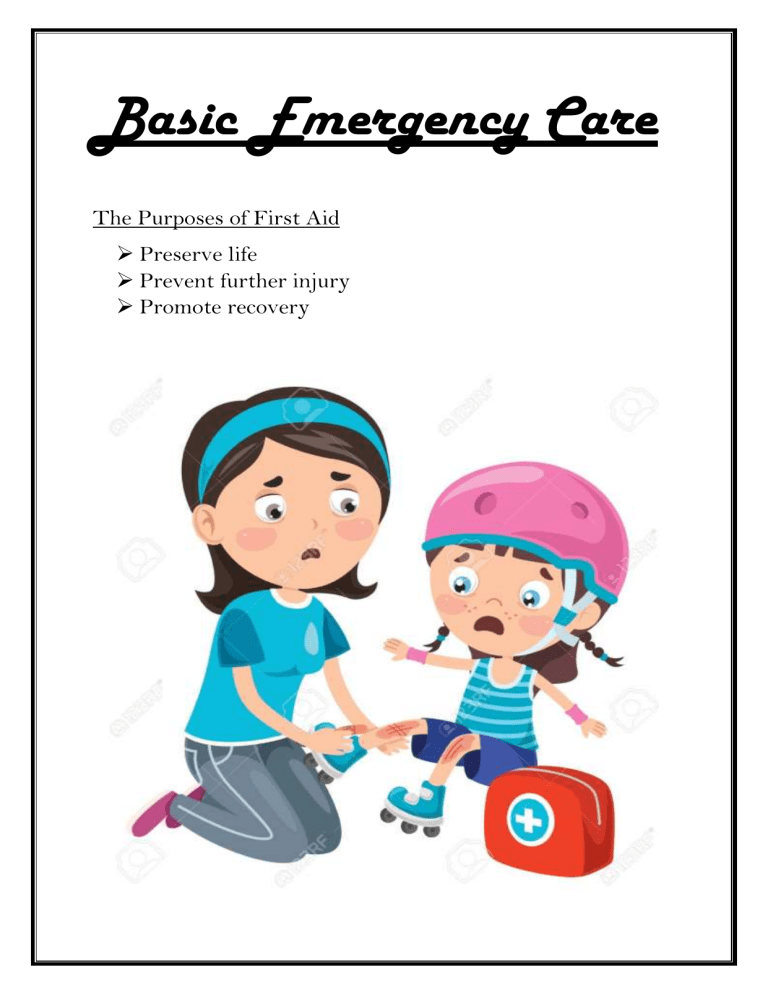
Basic Emergency Care The Purposes of First Aid Preserve life Prevent further injury Promote recovery Emergency Scene Management Assess the situation Make the area safe Emergency aid is given Get help from others Aftermath Aftermath First aid can be very demanding to a first aider both physically and emotionally. When done first aiding, look for someone to talk to, possibly a close family member or friend to share your experience with. Primary Survey Danger Response Help Airway Breathing Circulation Danger Remove any dangerous objects before approaching the casualty. *Approach the casualty from the feet in case they might have a neck or spine injury. Help Look for a bystander and ask them to call the toll-free numbers: 994 or 112. Airway Slightly tilt the chin up to open the airway and allow for easy breathing Breathing Look, Listen and Feel method. Look for the rise and fall of the chest. Listen by putting your ear by the mouth and nose for the sound of inhaling exhaling. Feel by placing the palm of your hand over the mouth of the casualty and feel for cold/warm breath. Circulation Pinch the thumb of the casualty and look for the fill of the red colour to determine if there is adequate circulation. Once the Primary Survey has taken place. Position the casualty into recovery position. Recovery Position 1. Place the casualty’s hand furthest from you in a stop sign. 2. Lift the leg furthest from you until it is bent in a triangular form. 3. Interlock your hand with the hand in a stop sign and move it to the opposite ear. 4. Place your vacant hand underneath the knee joint and gently move the casualty until they are lying on their side with the bent leg on top. 5. Adjust the leg so that it is at a 90-degree angle. 6. Tilt the chin of the casualty slightly to open the airway. 7. Place a blanket on top of the casualty for shock. Secondary Survey After primary survey has been completed, the secondary survey takes place but only under the conditions that: 1. Medical help is delayed 2. Casualty needs to be transported 3. The casualty has more than one injury. The steps for secondary survey: 1. SAMPLE Signs and symptoms Allergies Medication Past medical history Last meal Events leading up to incident 2. Vital signs of Casualty Level of consciousness Breathing Pulse Skin condition and temperature 3. Head to Toe Survey – this is a systematic way to check if the casualty has any injuries. Pat the part of the body and check for blood after each body party by looking at your glove-covered hands. The body parts will be checked in the following order: Head and neck Face Eyes Nose Mouth Ears Neck Chest Shoulders Arms and hands Spine Abdomen Hips and pelvis Legs and feet
